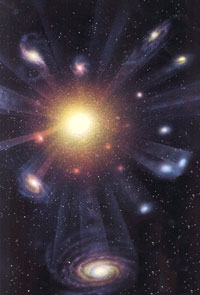2 Americans win the Nobel Prize in physics for cementing big bang theory
Americans John C. Mather and George F. Smoot won the 2006 Nobel Prize in physics on Tuesday for work that helped cement the big-bang theory of how the universe was created and deepen understanding of the origin of galaxies and stars.

The scientists shared the prestigious 10 million kronor (Ђ1.1 million; US$1.4 million) award for discovering the nature of "blackbody radiation" cosmic background radiation believed to stem from the big bang the Royal Swedish Academy of Sciences in Stockholm said.
Mather, 60, and Smoot, 61, based their work on measurements done with the help of the NASA-launched COsmic Background Explorer satellite in 1989.
They were able to observe the universe in its early stages about 380,000 years after it was born. Ripples in the light they detected also helped demonstrate how galaxies came together over time.
"They have not proven the big-bang theory but they give it very strong support," said Per Carlson, chairman of the Nobel committee for physics.
"It is one of the greatest discoveries of the century. I would call it the greatest. It increases our knowledge of our place in the universe."
Mather, works at the NASA Goddard Space Flight Center in Greenbelt, Maryland, and Smoot works at the Lawrence Berkeley National Laboratory in Berkeley, California.
Reached at his home in Berkeley, Smoot told The Associated Press he was surprised to have gotten a wake-up call from the Nobel committee in the middle of the night.
Subscribe to Pravda.Ru Telegram channel, Facebook, RSS!





